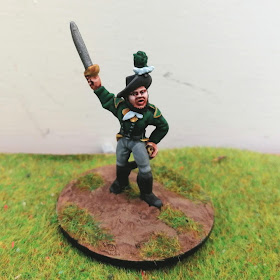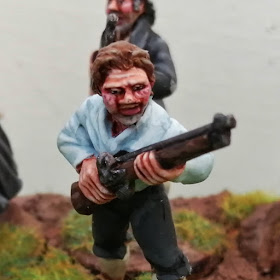As soon as I started my 1798 Rebellion Project, "The Year of the French" was recommended to me by several different people. It is a historical novel, set during the French landing in Connacht in late Summer 1798. That sounded like an interesting premise to me, so I borrowed the book from my university's library. I was not disappointed!
The story begins in the village of Killala, after the defeat of the Rising in Wexford. Rumours abound among the local poor about a great "Army of the Gael" and the possibility of French assistance. Owen Rua MacCarthy, a schoolmaster, Gaelic poet and libertine, is more cynical than most. One evening he is called by a group of peasants to a tavern. As the only man able to write persuasively in English, Owen is made to write a letter to the "Big Lord", demanding an end to evictions. This group of men becomes known as the "Whiteboys of Killala", echoing an earlier tradition of Peasant resistance. Owen is then forced to take the Whiteboys' oath.
Meanwhile, the leaders of the United Irishmen are attempting to organise for a possible French landing. These leaders are mostly landowners, with many Protestants among them. They must now look to the Catholic, tenant Whiteboys for assistance. The United Men are divided by class, religion and politics, and are only brought together by a desire for an Irish Republic. As these rapid developments are taking place, there are whispers that "the French are on the sea"...
The novel is told from the perspectives of quite a few narrators, many of whom were real people. I feel that this is the book's greatest strength. It would have been easy for the author to fall back on old tropes, presenting a story of virtuous, impoverished Catholic rebels against evil, rich Protestant landlords, as many others have done. Instead he presents us with a far more nuanced and realistic view. Individuals of different classes and religions take their respective sides for their own reasons. Every character's opinions and motivations are made clear. For this reason, despite being a fictional story, "The Year of the French" is quite a good introduction to Irish politics of the time.
The novel is long, but well paced. I was never bored while reading it. It isn't the most action-packed book, and I don't think it would appeal to everyone. I'd definitely recommend it to anyone who is interested in this period of history, though.
I've heard that RTÉ produced a TV series based on the book in the 80s. It seems to have been fairly well received, but I've been unable to find it anywhere online. If anyone knows somewhere the series is available, I'd love to hear it.










































